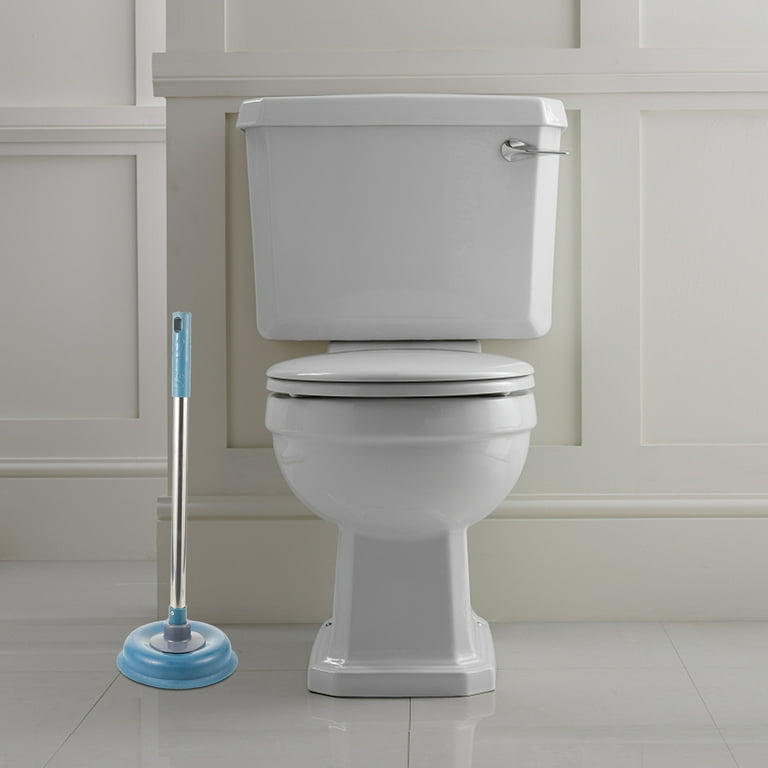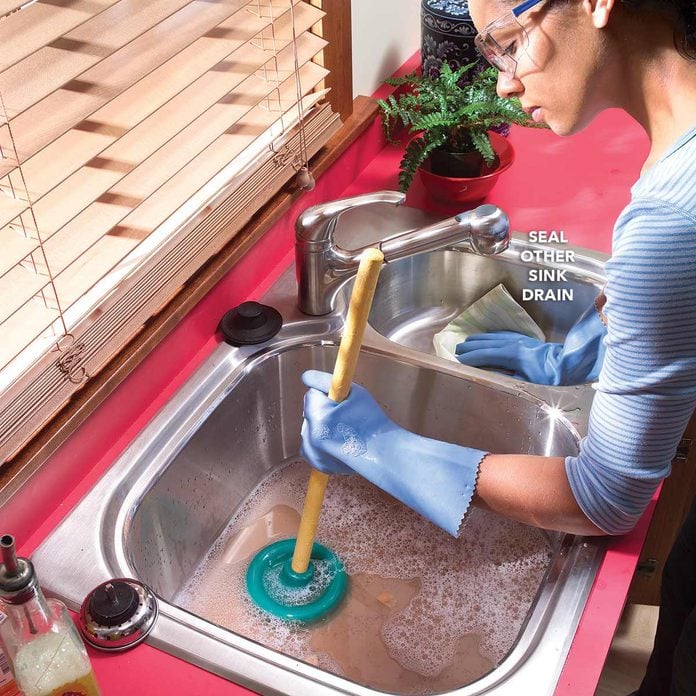Using Plungers and Drain Cleaner: Successful Approaches
Using Plungers and Drain Cleaner: Successful Approaches
Blog Article
How do you actually feel with regards to Here's How to Correctly Use a Toilet Plunger?

Intro
Proper maintenance of house drains is crucial for avoiding obstructions and ensuring smooth water circulation. Among the key tools in every homeowner's toolkit is the bettor, alongside various drain cleansers created to take on persistent clogs effectively. This article checks out just how to utilize bettors and drainpipe cleaners successfully to maintain your drains flowing openly.
Area 1: Comprehending Plungers
Types of Plungers
There are a number of sorts of bettors available, each made for various kinds of drains pipes and blocks. One of the most typical kinds include mug plungers, flange plungers, and accordion plungers.
Just How Plungers Work
Bettors work on the principle of producing pressure and suction to remove clogs. When correctly used over a drain, they develop a vacuum cleaner that can take out debris or break up obstructions.
Selecting the Right Plunger
Selecting the right bettor relies on the type of drain and the nature of the obstruction. Cup bettors are optimal for sinks and bathtubs, while flange plungers are much better suited for toilets as a result of their design.
Common Errors with Plungers
Avoiding these blunders makes certain effective plunging: inappropriate seal around the drain, not enough force, and unclear surrounding debris.
Section 2: Utilizing Plungers Successfully
Prep work
Before diving, make sure the plunger covers the drain entirely and develops a limited seal. Clear any visible particles around the drain opening.
Strategy
Beginning with mild diving movements to construct suction. Increase stress gradually, making use of a consistent rhythm. Repeat as required up until the drain clears.
Troubleshooting Tips
If diving doesn't function, try adjusting the seal, using petroleum jelly for a far better seal, or utilizing a various type of bettor.
Section 3: Comprehending Drain Cleaning Company
Types of Drainpipe Cleaners
Drain cleaners can be chemical or chemical. Chemical cleaners use strong chemicals to liquify clogs, while chemical cleaners utilize natural enzymes to break down raw material.
How Drain Cleansers Job
Chemical cleansers respond with obstructions to liquify them, while chemical cleansers break down natural materials like hair and grease without hurting pipelines.
Safety Considerations
Always wear handwear covers and eye security when utilizing chemical drainpipe cleansers. Make sure sufficient ventilation and adhere to manufacturer directions thoroughly.
Eco-Friendly Alternatives
Consider utilizing vinegar and baking soda or enzyme-based cleansers for eco-friendly options that are much safer for pipes and the atmosphere.
Area 4: Using Drain Cleaning Company Effectively
Application Methods
Pour chemical cleansers straight into the drainpipe opening. Allow them to benefit the recommended time prior to purging with hot water. Enzymatic cleansers ought to rest over night.
Precautions
Avoid mixing various types of cleaners, as this can create toxic fumes. Never make use of chemical cleaners together with a bettor, as spilling can occur.
Managing Persistent Blockages
For consistent clogs, consider utilizing a plumbing snake or calling a specialist plumbing professional to prevent damage to pipelines.
Verdict
Finally, recognizing exactly how to use bettors and drainpipe cleaners effectively is essential for keeping healthy plumbing systems. By picking the right tools and strategies, property owners can tackle small clogs and avoid significant plumbing concerns down the line.
How To Properly Use A Plumbing Snake To Clear Drains
When any drain clogs in our home arise, we tend to gravitate toward the plunger and little else. In cases where the plunger and its vacuum-created pressure are not able to clear clogs, many immediately move to harmful chemicals or simply call their plumber to fix the issue.
we’re happy to help with all drain cleaning needs and concerns. This includes informing you on a few other home remedies you may have at your disposal for minor to moderate clogs, one of which is the use of a plumbing snake. Many people have never used one of these before – let’s go over the steps to take when your drain clogs and you have a plumbing snake available.
Attempt Plunger Use
The first step here, as we noted above, should indeed be to grab your plunger when you notice a drain clog and attempt to resolve it this way. If you’re unsure how to use a particular type of plunger, our plumbers can answer any questions you have. If this doesn’t do the trick, however, you move on to the snake.
Locate And Prepare Snake
A plumbing snake is a metal or plastic device that’s generally about a quarter of an inch thick. It’s design with significant extensions, meant to reach down into your clogged drain and push the clog out. Snakes also contain drain augers that will latch onto and push stubborn blockages.
If your plunger doesn’t clear a clog, locate your snake and bring it to the drain in question. We also recommend keeping a bucket nearby to collect the clog once you pull it out, plus we’d advise wearing goggles and possibly protective gloves.
Feed Snake
Once you’re ready to go, feed the snake slowly down the drain, using the crank device it comes with to keep it moving until it finds the clog. Once this happens, much of the clog will be latched onto the coil so you can pull it out, while the rest will simply break up and flow downward.
Detach Debris
Remove the snake slowly from the drain, and once you’ve done so, pick off any debris that’s stuck to the coil. This is another area where wearing gloves is a must.
Flush Drain
Finally, take a few minutes to ensure the snake has done its job correctly. If you’ve been using it on a toilet, flush the toilet a couple times and make sure everything flows well. If you’ve used it on a different drain, flush it with some room temperature water.
https://www.mybuddytheplumber.com/blog/how-to-properly-use-a-plumbing-snake-to-clear-drains/

Application Methods
Pour chemical cleansers straight into the drainpipe opening. Allow them to benefit the recommended time prior to purging with hot water. Enzymatic cleansers ought to rest over night.
Precautions
Avoid mixing various types of cleaners, as this can create toxic fumes. Never make use of chemical cleaners together with a bettor, as spilling can occur.
Managing Persistent Blockages
For consistent clogs, consider utilizing a plumbing snake or calling a specialist plumbing professional to prevent damage to pipelines.
Verdict
Finally, recognizing exactly how to use bettors and drainpipe cleaners effectively is essential for keeping healthy plumbing systems. By picking the right tools and strategies, property owners can tackle small clogs and avoid significant plumbing concerns down the line.
How To Properly Use A Plumbing Snake To Clear Drains
When any drain clogs in our home arise, we tend to gravitate toward the plunger and little else. In cases where the plunger and its vacuum-created pressure are not able to clear clogs, many immediately move to harmful chemicals or simply call their plumber to fix the issue.
we’re happy to help with all drain cleaning needs and concerns. This includes informing you on a few other home remedies you may have at your disposal for minor to moderate clogs, one of which is the use of a plumbing snake. Many people have never used one of these before – let’s go over the steps to take when your drain clogs and you have a plumbing snake available.
Attempt Plunger Use
The first step here, as we noted above, should indeed be to grab your plunger when you notice a drain clog and attempt to resolve it this way. If you’re unsure how to use a particular type of plunger, our plumbers can answer any questions you have. If this doesn’t do the trick, however, you move on to the snake.
Locate And Prepare Snake
A plumbing snake is a metal or plastic device that’s generally about a quarter of an inch thick. It’s design with significant extensions, meant to reach down into your clogged drain and push the clog out. Snakes also contain drain augers that will latch onto and push stubborn blockages.
If your plunger doesn’t clear a clog, locate your snake and bring it to the drain in question. We also recommend keeping a bucket nearby to collect the clog once you pull it out, plus we’d advise wearing goggles and possibly protective gloves.
Feed Snake
Once you’re ready to go, feed the snake slowly down the drain, using the crank device it comes with to keep it moving until it finds the clog. Once this happens, much of the clog will be latched onto the coil so you can pull it out, while the rest will simply break up and flow downward.
Detach Debris
Remove the snake slowly from the drain, and once you’ve done so, pick off any debris that’s stuck to the coil. This is another area where wearing gloves is a must.
Flush Drain
Finally, take a few minutes to ensure the snake has done its job correctly. If you’ve been using it on a toilet, flush the toilet a couple times and make sure everything flows well. If you’ve used it on a different drain, flush it with some room temperature water.
https://www.mybuddytheplumber.com/blog/how-to-properly-use-a-plumbing-snake-to-clear-drains/

I'm very intrigued by A Guide to Plungers (and How to Use Them) and I'm hoping you appreciated my post. Sharing is nice. Helping others is fun. Many thanks for going through it.
Schedule Appointment Report this page